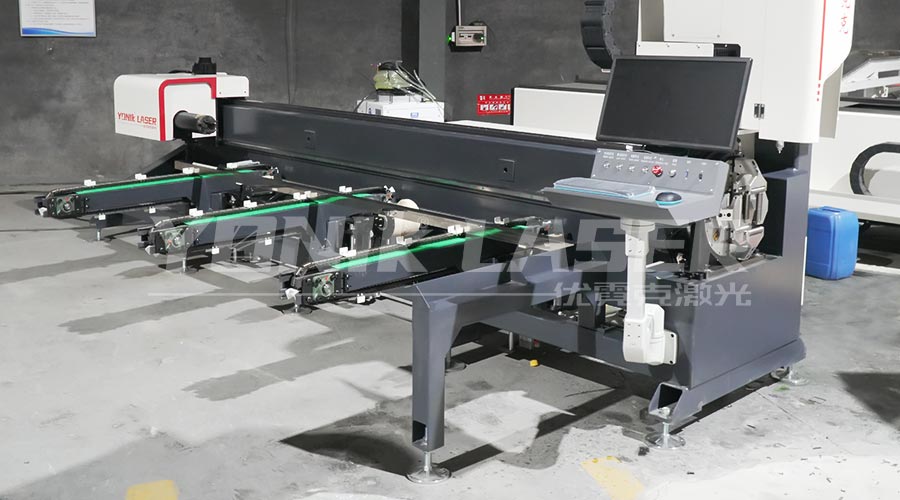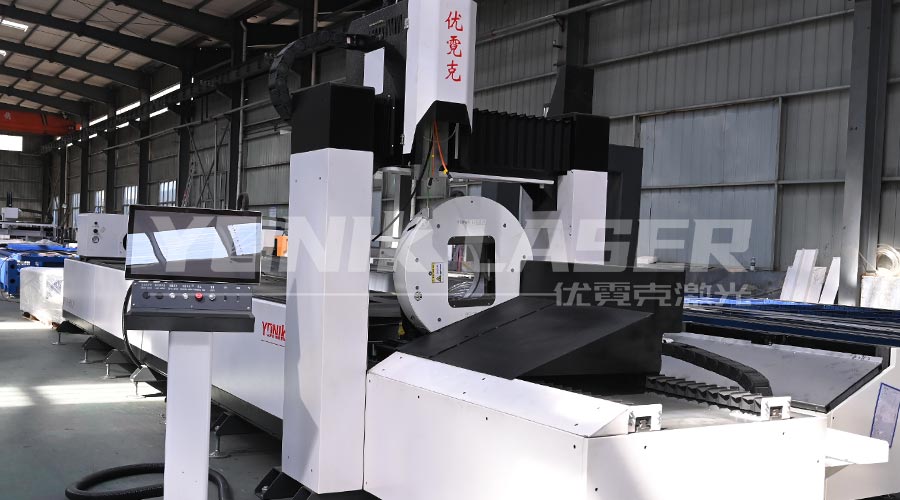In the realm of laser cutting, precise control of cutting depth is a critical yet often overlooked factor that directly impacts product quality, material utilization, and production efficiency. Whether processing thin sheets or thick plates, inconsistent cutting depth can lead to issues like incomplete penetration, excessive heat-affected zones (HAZ), or even material waste. This article delves into the core challenges of cutting depth control in laser cutting, explores their root causes, and provides actionable solutions to help enterprises achieve stable, high-precision processing.

1. Why Cutting Depth Control Matters
Cutting depth determines whether a material is fully separated (for thin plates) or partially penetrated (for thick plates in groove cutting). Poor control can result in:
Incomplete Penetration: Thin materials remain partially connected, requiring secondary processing.
Excessive HAZ: Thick plates suffer from overheating, weakening mechanical properties.
Material Waste: Inconsistent depth leads to scrap parts, increasing costs.
For industries like automotive manufacturing, aerospace, and precision machinery, even a 0.1mm deviation in cutting depth can compromise assembly accuracy or structural integrity.
2. Key Factors Affecting Cutting Depth
Cutting depth is a dynamic balance between laser energy input and material absorption. The following factors play decisive roles:
2.1 Laser Power and Energy Density
Laser power determines the total energy delivered to the material, while energy density (power divided by beam area) affects penetration efficiency. For example:
Cutting 2mm aluminum requires 1500W power to achieve full penetration.
Cutting 10mm carbon steel demands 4000W+ power to ensure consistent depth.
2.2 Cutting Speed
Speed inversely correlates with energy input per unit length. Slow speeds increase energy accumulation, deepening the cut but risking overheating; fast speeds reduce energy input, potentially leaving shallow cuts.
2.3 Focus Position
The focal point (where the laser beam is most concentrated) determines energy distribution. For thick plates, positioning the focus below the material surface (negative defocus) concentrates energy deeper, enhancing penetration.
2.4 Material Properties
Thickness: Thicker materials require higher power and slower speeds.
Type: Reflective materials (e.g., aluminum, copper) absorb less energy, demanding higher power or specialized wavelengths (e.g., blue laser).
Surface Condition: Coatings, oils, or rust reduce energy absorption, causing depth inconsistencies.
2.5 Assist Gas
Oxygen: Exothermic reaction with carbon steel boosts penetration but risks overheating.
Nitrogen: Inert gas prevents oxidation in stainless steel/aluminum but offers no energy boost.
3. Common Challenges in Cutting Depth Control
3.1 Thin Plate Cutting: Over-Penetration or Incomplete Separation
Thin materials (e.g., <1mm steel) are sensitive to power fluctuations. Even slight overpowering can cause burn-through, while underpowering leaves partial connections.
3.2 Thick Plate Cutting: Depth Inconsistency
Thick plates (e.g., >8mm) require precise energy delivery. Common issues include:
Tapered Cuts: Depth decreases from top to bottom due to energy dissipation.
Slag Adhesion: Molten metal solidifies before being blown away, reducing effective depth.
3.3 Reflective Material Cutting: Energy Loss
Highly reflective metals (e.g., aluminum, copper) reflect up to 90% of laser energy, making depth control difficult without specialized equipment.
3.4 Environmental Interference
Vibrations, temperature fluctuations, or dust in the cutting area can disrupt beam stability, causing uneven depth.
4. Solutions for Precise Cutting Depth Control
4.1 Dynamic Parameter Adjustment
Power-Speed Linkage: Use sensors to monitor material thickness in real time, automatically adjusting power and speed (e.g., lower speed for thicker sections).
Focus Position Optimization: For thick plates, employ negative defocus (focus 1-3mm below surface) to concentrate energy deeper.
4.2 Advanced Beam Control Technologies
Beam Shaping: Use diffractive optical elements (DOEs) to split the beam into multiple foci, enhancing penetration in thick materials.
Pulse Modulation: Adjust pulse frequency and duty cycle to control energy delivery (e.g., high-frequency pulses for thin plates, low-frequency for thick plates).
4.3 Material-Specific Strategies
Reflective Materials: Apply anti-reflective coatings or use shorter-wavelength lasers (e.g., 450nm blue laser for copper).
Coated Materials: Pre-clean surfaces to remove oils/rust, ensuring consistent energy absorption.
4.4 Process Monitoring and Feedback
In-Process Sensors: Install pyrometers or spectrometers to monitor HAZ temperature, adjusting parameters if overheating occurs.
Machine Vision: Use cameras to inspect cut depth in real time, triggering corrections if deviations exceed tolerances.
5. Case Studies: Real-World Depth Control Optimization
Case 1: Inconsistent Depth in 3mm Stainless Steel Cutting
Issue: A medical device manufacturer faced 0.3mm depth variations, causing assembly mismatches.
Root Cause: Fixed focus position and manual speed adjustments.
Solution: Implemented dynamic focus control (focus shifts ±1mm based on real-time thickness data) and automated power-speed linkage.
Result: Depth variation reduced to ±0.05mm, assembly pass rate improved to 98%.
Case 2: Over-Penetration in 1mm Aluminum Cutting
Issue: A consumer electronics supplier experienced 20% scrap due to burn-through.
Root Cause: High power (1800W) paired with slow speed (15m/min).
Solution: Reduced power to 1200W and increased speed to 25m/min, adding nitrogen assist gas.
Result: Scrap rate dropped to 2%, production efficiency increased by 30%.

6. Future Trends: Toward Autonomous Depth Control
AI and machine learning are revolutionizing cutting depth control:
Predictive Models: Train algorithms on historical data to predict optimal parameters for new materials.
Closed-Loop Systems: Combine real-time sensors with AI to autonomously adjust parameters mid-cut, ensuring consistent depth even with material variations.
Conclusion
Cutting depth control in laser cutting is a multifaceted challenge requiring a blend of hardware precision, parameter optimization, and real-time monitoring. By understanding the interplay of laser power, speed, focus position, and material properties, enterprises can overcome common pitfalls like inconsistent depth and over-penetration. Advanced technologies—from dynamic beam control to AI-driven closed-loop systems—are paving the way for autonomous, ultra-precise cutting, enabling manufacturers to achieve zero-defect production and stay competitive in the era of Industry 4.0.
2025-07-22
2025-07-21
2025-07-19